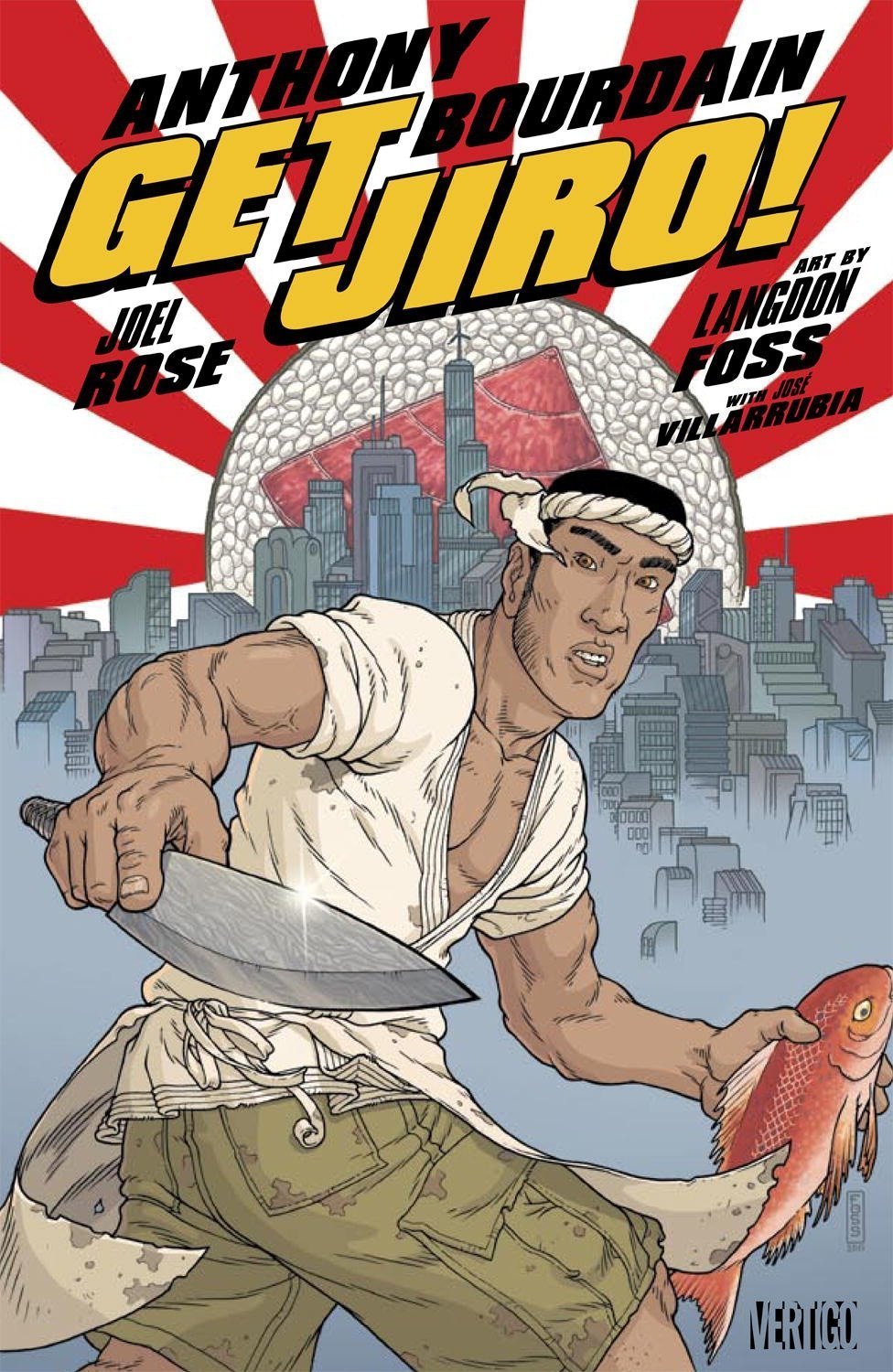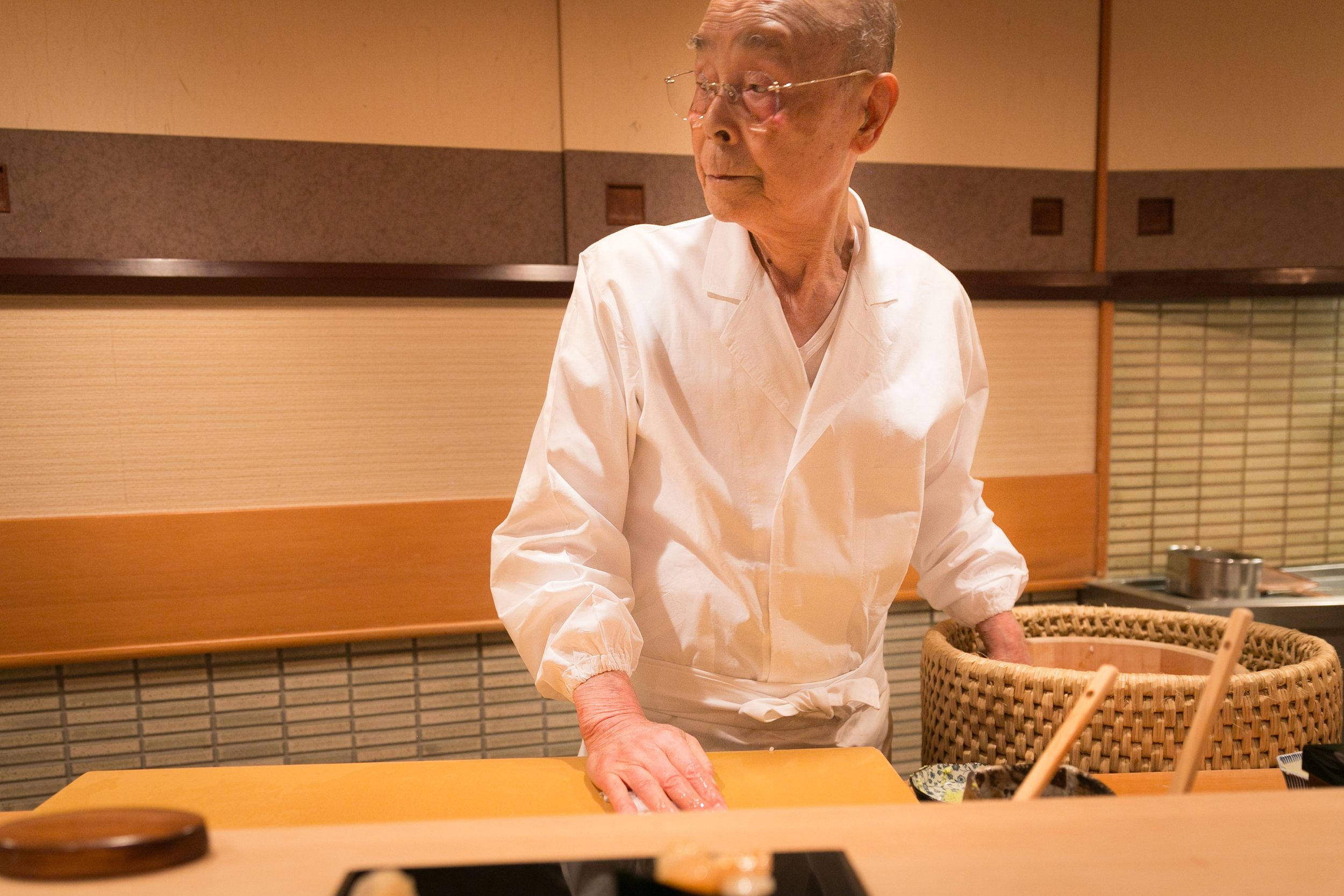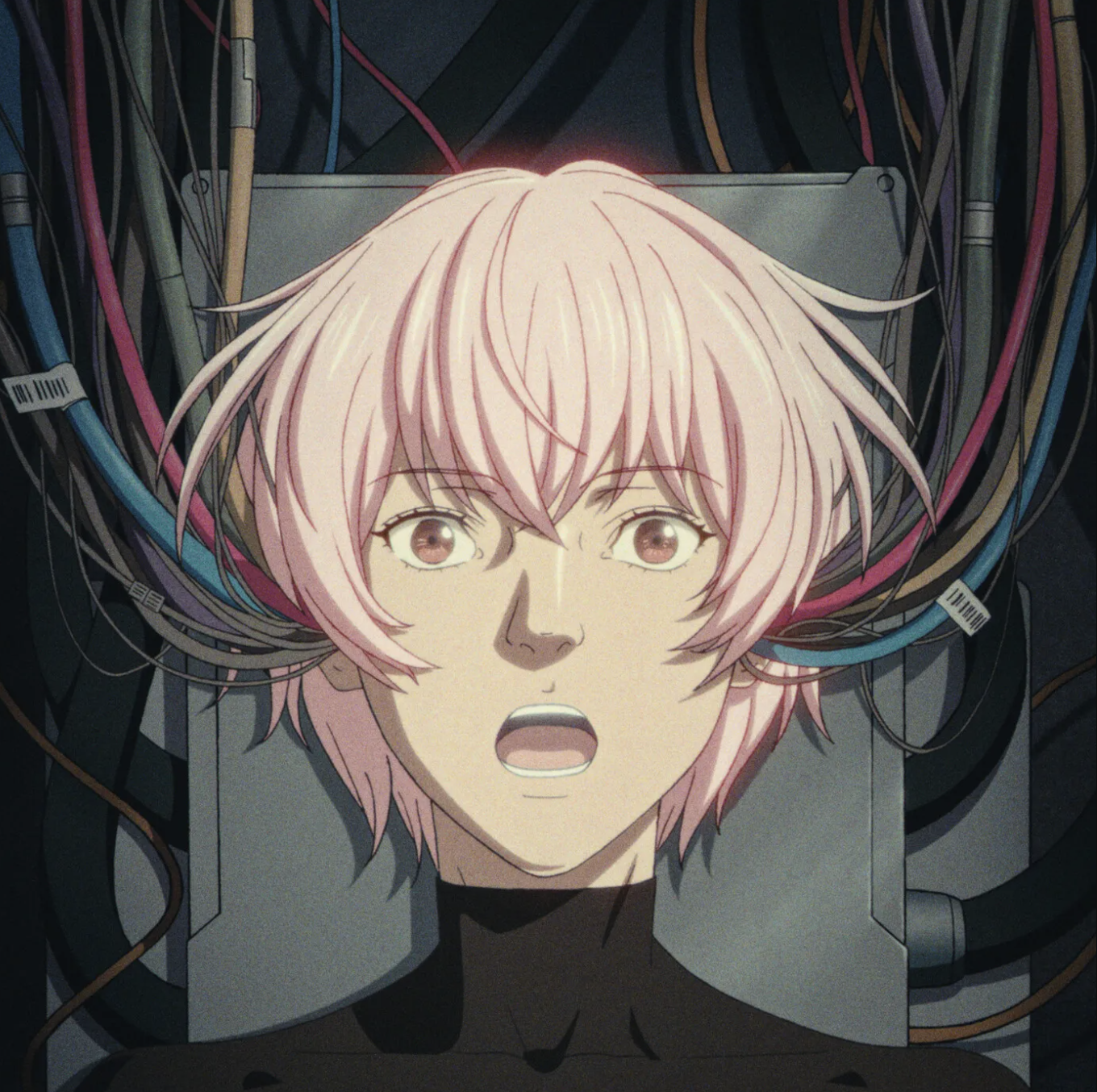Blood and Sushi: Anthony Bourdain’s Gory Food Manga

‘Good food, good eating, is all about blood and organs, cruelty and decay...It’s about danger — risking the dark, bacterial forces of beef, chicken, cheese, and shellfish.’
This is how Anthony Bourdain - food and travel writer, tv documentarian, and rebel chef - liked to eat.
Writing in his 1999 essay ‘Don’t Eat Before Reading This’ for The New Yorker, Bourdain set a tone for his approach to food commentary that would characterise his career. He was strictly no bullshit - and indulged in the guts and gore of the culinary world.
Landing him a book deal, this unique approach would plunge the little-known Bourdain into a life of fame as a TV chef and author.
Anthony Bourdain, photographed by J. Scott Wynn in 2001.
Born in New York in 1958, Bourdain began his career as a dishwasher and by 1999 was working as executive chef at Les Halles in Manhattan. After publishing a career-spurning and bestselling memoir, Bourdain would go on to create 293 episodes of television on food and travel across 4 different shows. Using food as a basis for exploring different societies, intercultural connections, and the human experience, Bourdain democratised food culture, and did so with honest, witty and open-minded enthusiasm.
Tragically, Bourdain took his own life on June 8, 2018, at the age of 61. His death was a shock to his fans and friends around the world, who mourned the loss of a gifted writer, chef, and cultural ambassador. In his honour, sabukaru explores Bourdain’s love affair with Japan. This relationship produced some creepy love children: Bourdain’s foodie horror comics.
Bourdain in Tokyo. Season 1, Episode 1 of A Cook’s Tour (2002).
Bourdain’s memoir Kitchen Confidential: Adventures in the Culinary Underbelly [2000], chronicled 30 years of drugs, sex, and culinary mischief, and gave us an upfront look into the dirty secrets - and sometimes morbid details - of his world, with trademark irreverence.
This is not to say his approach was pessimistic. For Bourdain, it was in this lurid and liberal appreciation of the culinary world, that a heightened - and even poetic - experience of food lay. An experience of food worth telling stories about. It is with a peculiar romance that he writes ‘I love a spicy boudin noir [blood sausage] that squirts blood in your mouth’, and fantasizes about ‘oysters...especially at three in the morning’. It was in full-frontal and explicit eating that Bourdain found pleasure and joy.
Get Jiro! [2012]
It is no surprise, then, that Bourdain had a deep fascination with Japan and its culinary culture, where one is willing to risk it all on a slice of horsemeat sashimi or a plate of shikaro [cod sperm sacs]. He was particularly enamoured with the art of sushi, where ‘cooking raw’, simplicity and precision bring you a visceral experience of ingredients. ‘It’s got a strange and terrible beauty to it’, he comments, as he looks on dreamily at a live fish being sliced up at Tsukiji market in the first ever episode of A Cook’s Tour.
Bourdain’s love for Japanese cuisine was a matter of life and death. In an interview with Maxim, he told us, ‘If I had to agree to live in one country, or even one city, for the rest of my life, never leaving it, I'd pick Tokyo in a second.’
In characteristic macabre and histrionic style, Bourdain described his ideal death row meal in the Guardian: a 23-course omakase tasting menu made by three-Michelin starred Jiro Ono, the subject of the documentary film Jiro Dreams of Sushi [2011].
“After the final course, usually Jiro’s incredibly precise tamago [omelette], preferably while I’m still chewing, you could step up behind me and – KGB style – shoot me in the back of the neck. As I sagged to the floor, in my last conscious seconds, I would know that this night, no one on Earth had eaten better than me. Pure pleasure.”
Bourdain’s love of Japan culminated in the three comics he published in his lifetime. These passion projects serve up a heady helping of blood sprays, blue language and beautifully illustrated violence. It is here that Japanese food and culture, and Bourdain’s penchant for the gory and grotesque, come together in perfect, horrible harmony.
Get Jiro! [2012]
Bourdain’s bestselling comic Get Jiro! [2012] was co-written with Joel Rose, and illustrated by Langdon Foss, and its prequel Get Jiro: Blood and Sushi [2015], was illustrated by Alé Garza. These were a satirical take on the world of high-end restaurant culture, and follow the eponymous Jiro, a knife-wielding and skilled sushi chef who navigates the violent restaurant world of a dystopian Los Angeles, where chefs take culinary competition to absurd extremes. Blood and Sushi explores Jiro’s origins as the son of a powerful Yakuza crimelord in Tokyo, torn between his duty and a desire to master the art of sushi-making.
Illustration by Leonardo Manco in Hungry Ghosts [2018]
In 2018, Bourdain published Hungry Ghosts - a four-part horror anthology with each tale illustrated by different artists. The premise is based on the traditional Japanese Edo-period parlour game known as Hyakumonogatari Kaidankai. Samurai would gather and 100 candles would be lit. Each warrior would take his turn to tell a Kaidan - a ghost story - and subsequently blow out a candle, the room growing darker and darker as the game progressed.
Bourdain’s version combines samurai lore with foodie gore: a circle of international chefs replace the warriors, and stories of the supernatural take on a culinary colour. In one tale, “Boil in the Belly”, a tiny mouth appears on a boy's belly; it speaks, begging to be fed. This turns out to be a hungry ghost - which sits like a big worm in the boys gut. In another, a ramen chef is eaten alive.
Illustration by Paul Pope in Hungry Ghosts [2018]
Bourdain’s foray into the world of fiction is unsurprising when the quirks and drama of the kitchen have always served as a source of inspiration for powerful imagery and storytelling in his journalistic work. But manga, as a visual form, does real justice to Bourdain’s uncensored and satirical lens. Even the chefs of Hungry Ghosts are gross caricatures of various real-life chefs that Bourdain knew in his lifetime.
Get Jiro: Blood amd Sushi [2015]
Bourdain and Rose’s comic work took influence from the gurume manga [gourmet manga] genre, particularly the long-running Oishinbo. Iorie Brau writes that gurume manga ‘draws their images from a variety of angles and in wide shots and close-ups. Scenes of food preparation display a strong sense of movement….the act of cooking takes on the drama of a sword fight.’ Equally cinematic, detailed shots in Hungry Ghosts, and Get Jiro! juxtapose food, eating, and violence. They evoke feelings of hunger and disgust simultaneously, making for a bizarre reading experience. Where blood and sushi are muddled, appetite and revulsion become confused. Such hyperbolises Bourdain’s approach to food.
Illustration by Leonardo Manco in Hungry Ghosts [2018]
For Bourdain, a chef - whether imagined as a knife-wielding sushi master or a samurai substitute - is a warrior. This was a recurrent trope in Bourdain’s television productions. In episodes based on Japan, segments on martial arts, whether it be sumo, kendo, or karate, are often intersliced with explorations of Japanese cuisine. In Parts Unknown, Tokyo sushi chef and karate fighter Yasuda exemplifies this comparison. ‘Look at his posture...’, narrates Bourdain, ‘...a fighter’s stance’.
He really respects these guys. If food is a violent, grisly domain, then the sushi chef in particular has the discipline and training to artfully navigate it - and to make it delicious.
Bourdain’s fictional Jiro is an antagonist to the ultra-commodified and superficial restaurant world: a rebel chef and a reflection, perhaps, of how Bourdain liked to view himself. He never sways in his integrity. He is dedicated, a perfectionist, a purist. In his training, he painstakingly makes rice over and over again until it is just right. When a customer orders ‘California Roll’- an American invention, not real sushi - he simply cuts his head off.
The hyperreal Jiro embodies Bourdain’s boyish awe of the Japanese culinary: these chefs are the ultimate ‘noble warriors’ and elevate cooking to high art. This is a process Bourdain wished to emulate - very literally - by creating these comics. He combines his love of horror and Japanese gastronomy and produces it as visual art. In this way, Bourdain did what he did best: shared his appetites with his readers, as a truly imaginative, gluttonous, and absurd experience.
Bourdain in his cookbook Appetites (2016). Photographed by Bobby Fisher.
Author’s Bio
Thea Jowsey-Cavanagh [@svengaliiii]
Born in London and based in Tokyo, Thea is a writer and creative, who spends most of her time thinking about her next meal.







